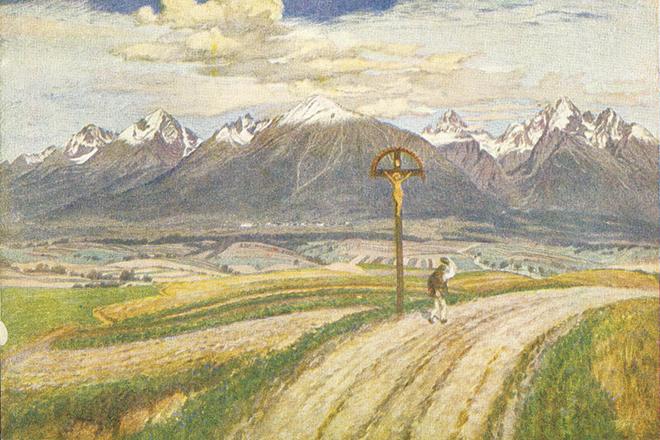This postcard from the 1920s is a reproduction of a painting by Václav Malý, a Czech artist. The picture depicts a romantic panorama of the High Tatras, a mountain range shared by Slovakia and Poland and considered one of Slovakia’s national symbols, with a cross in the foreground.
In the Middle Ages, roads and town squares in this part of Europe were “graced” more often with gallows and scaffolds than crucifixes. It wasn’t until after the Council of Trent (1545–1563)—a major part of the Catholic Church’s response to the Protestant Reformation—that crucifixes, chapels, and statues of saints began to appear along roadsides. The Church declared the second half of the 16th century the “Century of Saints”, encouraging visual expressions of faith in public spaces.
Since walking was the most common form of transportation, travellers often paused to rest—and to pray—at these wayside shrines. People found comfort in them, offering prayers of thanks or supplication, particularly during times of war, hardship, or outbreaks of disease.
Many of these roadside shrines still dot the Slovak countryside today, contributing to its distinct and spiritual atmosphere. From simple stone columns and wooden crosses to intricately decorated chapels, they are often paired with natural landmarks such as trees or placed on hilltops, offering not only beauty but also shade and shelter to passers-by.
This article was first published by The Slovak Spectator on June 16, 2008. It has been updated to be relevant today.

